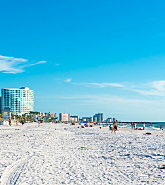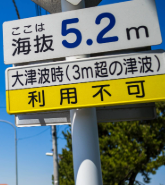On August 24, 2016 – just a few weeks ago – an earthquake hit a remote area of the Apennine mountains of central Italy in the middle of the night. Fewer than 3000 people lived in the vicinity of the strongest shaking. But nearly 1 in 10 of those died when the buildings in which they were sleeping collapsed.
This disaster, like almost all disasters, was squarely man-made. Manufactured by what we build and where we build it; or in more subtle ways – by failing to anticipate what will one day inevitably happen.
Italy has some of the richest and best researched disaster history of any country, going back more than a thousand years. The band of earthquakes that runs through the Apennines is well mapped – pretty much this exact same earthquake happened in 1639. If you were identifying the highest risk locations in Italy, these villages would be on your shortlist. So in the year 2016, 300 people dying in a well-anticipated, moderate-sized earthquake, in a rich and highly-developed country, is no longer excusable.
Half the primary school in the town of Amatrice collapsed in the August 24th earthquake. Very fortunately, it being the middle of the night, no children were in class. Four years before, €700,000 had been spent to make the school “earthquake proof.” An investigation is now underway to see why this proofing failed so spectacularly. If only Italy was as good at building disaster resilience as mobilizing disaster response: some 7000 emergency responders had arrived after the earthquake – more than twice as many as those who lived in the affected villages.
The unnatural disaster
When we look back through history and investigate them closely we find that many other “natural disasters” were, in their different ways, also man-made.
The city of Saint-Pierre on the island of Martinique was once known as the “little Paris of the Caribbean.” In 1900 it had a population of 26,000, with tree-lined streets of balconied two and three story houses. From the start of 1902 it was clear the neighbouring volcano of Mont Pelée was heading towards an eruption. The island’s governor convened a panel of experts who concluded Saint-Pierre was at no risk because the valleys beneath the volcano would guide the products of any eruption directly into the sea. As the tremors increased, the Governor brought his family to Saint-Pierre to show the city was safe, and therefore, likely all but one of the city’s inhabitants, died when the eruption blasted sideways out of the volcano. There are some parallels here with the story of those 20,000 people drowned in the 2011 Japanese tsunami, many of whom had assumed they would be protected by concrete tsunami walls and therefore did not bother to escape while they still had time. We should distrust simple notions of where is safe, based only on some untested theory.
Sometimes the disaster reflects the unforeseen consequence of some manmade intervention. In Spring 1965, the U.S. Army Corps of Engineers completed the construction of a broad shipping canal – known as the Mississippi River Gulf Outlet (“Mr Go”) linking New Orleans with the Gulf of Mexico. Within three months, a storm surge flood driven by the strong easterly winds ahead of Hurricane Betsy was funnelled up Mr Go into the heart of the city. Without Mr Go the city would not have flooded. Four decades later Hurricane Katrina performed this same trick on New Orleans again, only this time the storm surge was three feet higher. The flooding was exacerbated when thin concrete walls lining drainage canals fell over without being overtopped. Channels meant for pumping water out of the city reversed their intended function and became the means by which the city was inundated.
These were fundamental engineering and policy failures, for which many vulnerable people paid the price.
RiskTech
My new book, “The Cure for Catastrophe,” challenges us to think differently about disasters. To understand how risk is generated before the disaster happens. To learn from countries, like Holland, which over the centuries mastered their ever-threatening flood catastrophes, through fostering a culture of disaster resilience.
Today we can harness powerful computer technology to help anticipate and reduce disasters. Catastrophe models, originally developed to price and manage insurance portfolios, are being converted into tools to model metrics on human casualties or livelihoods as well as monetary losses. And based on these measurements we can identify where to focus our investments in disaster reduction.
In 2015 the Tokyo City government was the first to announce it aims to halve its earthquake casualties and measure progress by using the results of a catastrophe model. The frontline towns of Italy should likewise have their risks modeled and independently audited, so that we can see if they are making progress in saving future lives before they suffer their next inevitable earthquake.
The Cure for Catastrophe is published by Oneworld (UK) and Basic Books (US)






